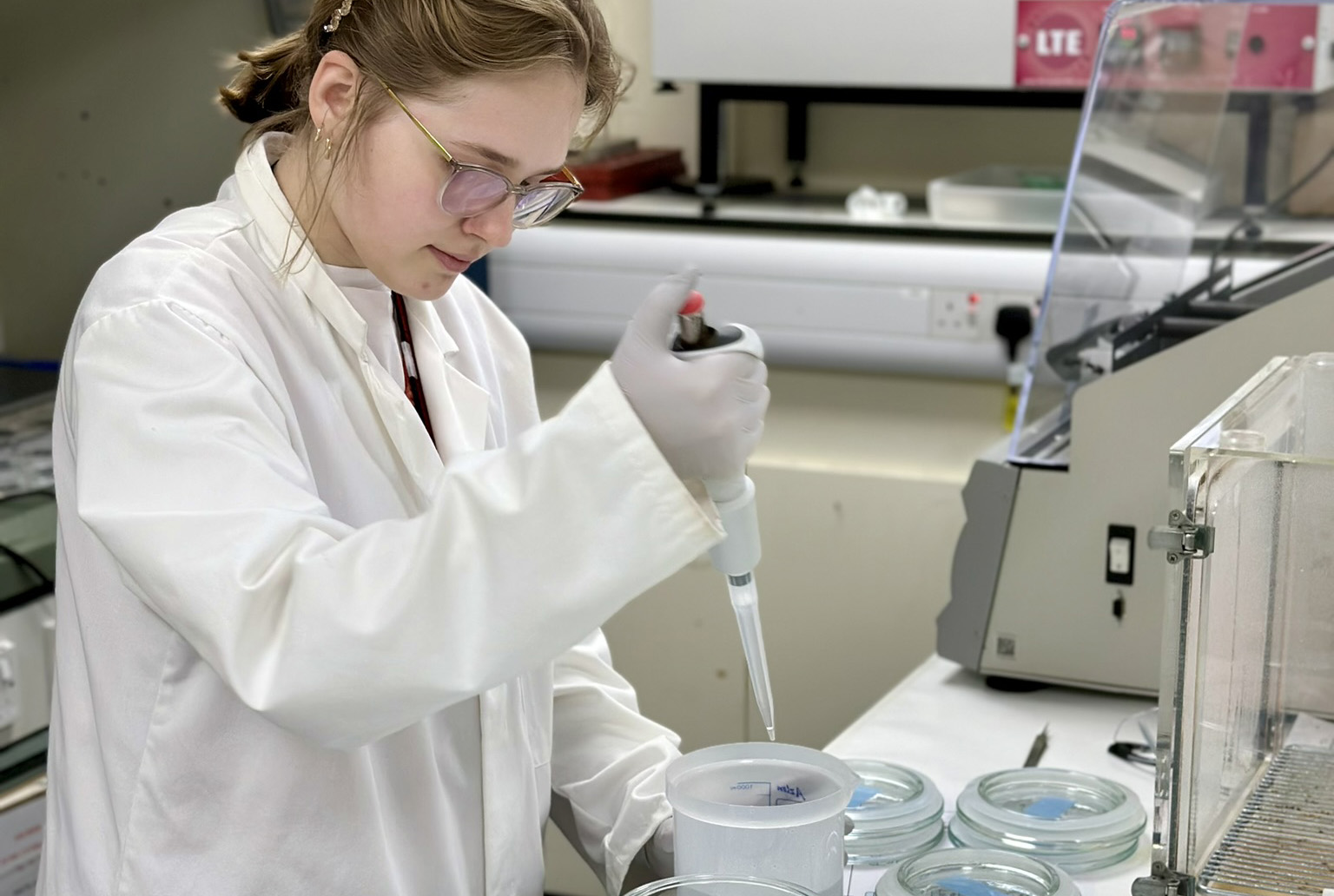Understanding environmental impact through the study of sediments
A new study aims to understand the range of organic molecules present in urban waterway sediments from different locations around the world.
23/02/2022 By BGS Press
The risk posed to humans, fauna and flora by anthropogenic contaminants in the environment is of growing concern. The impact of pollution on rivers and other waterways is an important area for research, especially in urban settings where the pollution picture often reflects local land use and management policies.
The introduction of waste water from residential areas, hospitals, waste treatment plants, agriculture and/or industrial facilities, alongside less direct pollutants such as those from vehicle use, can create challenging and complex problems. These extend to the soils and sediments of watercourses, which may absorb or bury pollutants and act as contaminant reservoirs. Soils and sediments may become local sources of pollution if later eroded or otherwise disturbed.
Traditionally, technologies such as gas chromatography mass spectrometry (GC/MS) and liquid chromatography mass spectrometry (LC/MS) have been used to detect and quantify contaminants in environmental samples. However, these approaches are limited because they usually only provide information on tens to hundreds of sample components. The mixture of compounds relating to natural organic matter in sediments along with the diverse range of anthropogenic, or human-made, contaminants, can together constitute tens of thousands of molecular components. This means that routine analytical methods can’t unveil the full pollution story locked within environmental samples.
The project
This PhD project, piloted by Rory Downham and project supervisors Dr Mark Barrow of the University of Warwick and BGS’s Christopher Vane, sets out to investigate the range of organic molecules present in urban waterway sediments from different locations around the world, including an urban canal in Hanoi (Vietnam), the Nairobi River (Kenya) and the River Thames (UK). These represent very different samples:
- the Hanoi sediments are from an engineered watercourse under industrial influences
- the Nairobi River sediments are from areas affected by riverside slum dwellings
- the Thames samples were retrieved from a tidal mud island, which represents an archive extending back to medieval times

Sample location at an outflow pipe in an urban canal in Hanoi. © Christopher Vane, BGS/UKRI.
Analysis
The sediments were processed and extracted in organic solvent by Chris Vane at BGS Keyworth in July 2020 and subsequently transferred to the University of Warwick. Following a COVID-19 shutdown period, the Millburn House ICR Laboratory at Warwick re-opened and sample analyses began in September 2020.
The non-targeted analytical approach brings state-of-the-art, ultrahigh-resolution mass spectrometry — namely Fourier transform ion cyclotron resonance mass spectrometry (FTICR MS) — to the challenge of detecting as many organic sample components in the sediment extracts as possible.

These sediment cores from an urban canal in Hanoi were processed and subsampled by the BGS for subsequent FTICR MS analysis. © Christopher Vane, BGS/UKRI.
To date, 12 Nairobi, 22 Hanoi, and 18 Thames FTICR MS datasets have been acquired and subjected to data processing. Following molecular classifications and deployment of modern data visualisation tools, they show interesting trends for complex mixtures such as crude oil and natural organic matter. For example, some sediment datasets feature a signature pattern that indicates sulphur-containing thiophenic pollutants, which are highly likely to have a fossil fuel origin. Other datasets reveal sterol biomarker patterns, which highlight the influence of sewage in some of these waterways.
These project datasets have raised additional points of interest, leading to smaller, spin-off investigations to allow for more complete interpretations of the sediments.
Future work
This project is progressing towards analysing sediment samples from the Celtic Sea, from about a hundred meters below sea level. The University of Warwick will extract organic matter from these samples, followed by mass-spectrometric exploration. Using tools for complex mixture analysis and data interpretation, we expect this research to provide insights into organic matter burial processes and carbon storage beneath the waves.
About the author
Rory Downham
I completed my undergraduate degree in chemistry and physical geography at Keele University in 2004 and later joined the Home Office Centre for Applied Science and Technology in support of UK policing. A growing interest in academia and environmental science challenges, and a desire to delve deeper into analytical chemistry, set me on my present PhD journey.
Relative topics
Latest blogs

AI and Earth observation: BGS visits the European Space Agency
02/07/2025
The newest artificial intelligence for earth science: how ESA and NASA are using AI to understand our planet.

Geology sans frontières
24/04/2025
Geology doesn’t stop at international borders, so BGS is working with neighbouring geological surveys and research institutes to solve common problems with the geology they share.

Celebrating 20 years of virtual reality innovation at BGS
08/04/2025
Twenty years after its installation, BGS Visualisation Systems lead Bruce Napier reflects on our cutting-edge virtual reality suite and looks forward to new possibilities.

Exploring Scotland’s hidden energy potential with geology and geophysics: fieldwork in the Cairngorms
31/03/2025
BUFI student Innes Campbell discusses his research on Scotland’s radiothermal granites and how a fieldtrip with BGS helped further explore the subject.

Could underground disposal of carbon dioxide help to reduce India’s emissions?
28/01/2025
BGS geologists have partnered with research institutes in India to explore the potential for carbon capture and storage, with an emphasis on storage.

Carbon and oxygen isotope analysis of carbonates and the development of new reference materials
18/12/2024
Dr Charlotte Hipkiss and Kotryna Savickaite explore the importance of standard analysis when testing carbon and oxygen samples.

Studying oxygen isotopes in sediments from Rutland Water Nature Reserve
20/11/2024
Chris Bengt visited Rutland Water as part of a project to determine human impact and environmental change in lake sediments.

Celebrating 25 years of technical excellence at the BGS Inorganic Geochemistry Facility
08/11/2024
The ISO/IEC 17025 accreditation is evidence of technical excellence and reliability, and a mark of quality assurance.

Electromagnetic geophysics in Japan: a conference experience
23/10/2024
Juliane Huebert took in the fascinating sights of Beppu, Japan, while at a geophysics conference that uses electromagnetic fields to look deep into the Earth and beyond.

Exploring the role of stable isotope geochemistry in nuclear forensics
09/10/2024
Paulina Baranowska introduces her PhD research investigating the use of oxygen isotopes as a nuclear forensic signature.

BGS collaborates with Icelandic colleagues to assess windfarm suitability
03/10/2024
Iceland’s offshore geology, geomorphology and climate present all the elements required for renewable energy resources.

Mining sand sustainably in The Gambia
17/09/2024
BGS geologists Tom Bide and Clive Mitchell travelled to The Gambia as part of our ongoing work aiming to reduce the impact of sand mining.


